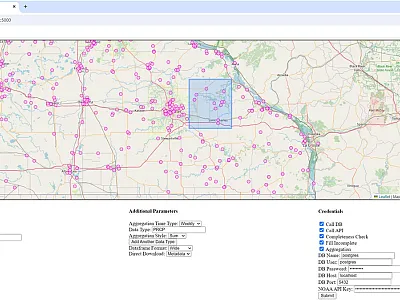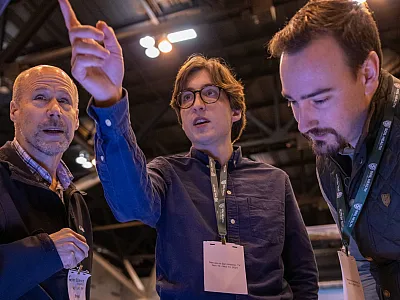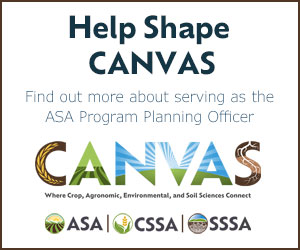Cultivating Capitol Connections
Members Advocate for Ag Research Funding at Congressional Visits Day
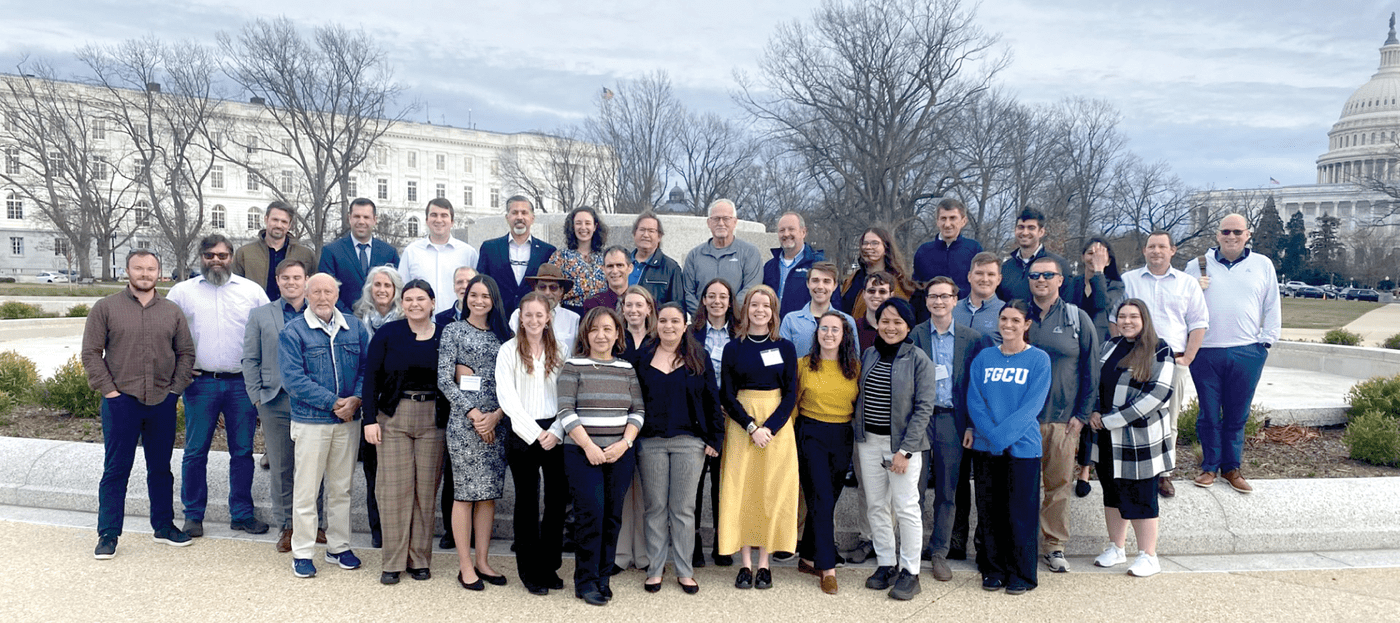
Public investment in agriculture research, though long seen as a bipartisan national security issue in Washington, DC, faces challenges from international competition and budget cuts.
To overcome these barriers, lawmakers must understand how USDA research funding helps American farmers feed more people using fewer acres.
No one is better positioned to tell that story than the researchers, students, and certified professionals who visited Washington, DC in early March as part of Congressional Visits Day. The event, organized by the Societies, brought 45 ASA, CSSA, and SSSA members, representing 23 states, to the Capitol to conduct 63 congressional meetings.
The team’s key advocacy requests were straightforward: Fund the Agriculture and Food Research Initiative (AFRI) at $500 million and the Agriculture Advanced Research and Development Authority (AgARDA) at $50 million for the fiscal year 2025 budget.
This effort—part of a wider push from dozens of research institutions, scientific societies and other stakeholders—faced a setback in mid‐March with a $10 million budget cut for AFRI, to $445 million, in the fiscal year 2024 budget.
The backdrop of fiscal austerity in Congress makes engagement with policymakers even more critical, says Jim Cudahy, the Societies’ CEO.
“Research funding continually surfaces as one of the top priorities of our members,” Cudahy says. “Leveraging our members’ stories and insights are our best tool to show policymakers how agriculture and soils research is integrated with America’s farms.”
Society member expertise regarding the local impacts of this funding—especially when it comes from a lawmaker’s own district or state—is our strongest tool to influence public policy. And in‐person visits continue to be the most effective way to influence public policy decision‐making.
By joining these discussions, attendees also learned about how the federal government works while exercising their scientific communication skills to break down complex research topics for a non‐specialist audience, explains Dr. Michael Thompson, 2024 SSSA president.
“Those are all good things for members of a professional society to know about and practice,” he says.
The event begins with training on communication and advocacy strategies, including a focus on the main message.
“Leveraging our members’ stories and insights are our best tool to show policymakers how agriculture and soils research is integrated with America’s farms.”
Staying on Message
For Shawn Wallace, a Certified Crop Adviser (CCA) and field agronomist at Carolina Eastern‐Vail Inc., the big picture is that American farmers will need to grow more food for a rising global population on fewer acres of farmland.
Agricultural research in genetics, fertility, and other fields is, he says, the only way to meet this goal. At the same time, he emphasizes that these advancements must come with an ethos of stewardship toward the land and water.
“Farmers and producers were the original and have maintained being the leading stewards of the land,” he says. “Water and soil quality is the heartbeat of their operations. It has to be at the forefront of their business models to ensure sustainability and growth.”
Lawmakers of both parties are generally receptive to this message, he says.
“The food supply is a national security issue, and it doesn’t matter which side of the aisle you’re on in DC,” Wallace says. Lawmakers are aware that the United States is falling behind China and the European Union when it comes to public agricultural research spending.
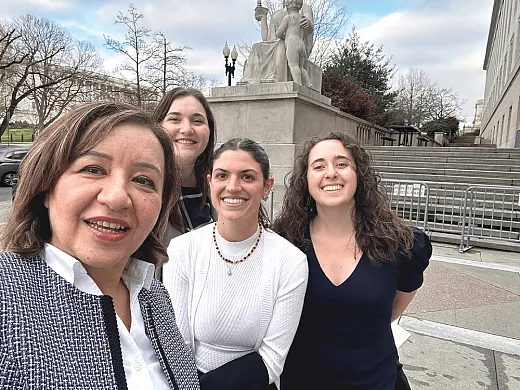
On its own, though, this knowledge and support may not be enough to move the needle on research funding, says Julie McClure, vice president of the Torrey Advisory Group, which provided support for this event.
“Overwhelmingly, we received good feedback from congressional offices that they support our requests, but it’s critical that we have constituents make the request and also be able to share local impacts of this funding,” she says.
Funding is at the forefront of the advocacy message, but participants also advocated for the Societies’ farm bill policy priorities, as well.
For example, the proposed Increased TSP Access Act of 2023 intends to alleviate a bottleneck in access to USDA programs by allowing CCAs to be certified as technical service providers (TSPs). In his discussions with staffers, Wallace was able to explain how the act would benefit farmers in the lawmakers’ home districts.
For lawmakers who asked whether the private sector would fund this research, the message focused on the public sector’s unique role.
Sarah Chu, a doctoral student at Texas A&M University who studies weed science under Dr. Muthu Bagavathiannan, explained to policymakers how AgARDA funding would be used for “high‐risk, high‐reward” projects that might not otherwise be funded.
She used technological examples from weed science—such as the increased use of robotics and image capturing to assess and control weeds—and emphasized that farmers benefit most from research when its results are available to the public.
A consistent strength of Congressional Visits Day is the combination of voices from growers, industry, and academia to show how research benefits the entire food and agriculture supply chain.
The Pipeline at Work
Congressional Visits Day participants are divided into teams comprising students, professional scientists, and certified professionals who can explain the research pipeline from laboratory to farmland.

Beverly Alvarez Torres, a doctoral student studying soil salinity at North Dakota State University, tells lawmakers USDA funding has been central to her academic career, funding her four undergraduate internships and her master’s and doctoral projects.
She is proud of the USDA’s role in her education, which can demonstrate the real‐life impacts USDA funding has on researchers.
The inclusion of certified professionals, both CCAs and CPSS’s, demonstrates the working relationship between university researchers and production agriculture, Wallace says.
“The work researchers are doing at their universities is coming to CCAs and showing up in a useful way at farms,” Wallace says. “It’s important to show the working relationship between the university and production agriculture.”
Effective advocacy is about more than the message itself; in‐person visits like these establish the relationships that are critical to advancing a policy agenda. Thompson notes how the personal relationships of an undergraduate on his team who knew a staffer from college helped generate rapport with legislative offices.
“What we need to do is capitalize on Congressional Visits Day and keep those relationships going through emails and other forms of communication, so they know if they have a question they can contact us for information,” he says.
Growing Your Skills
In addition to contributing to public policy discussion, attendees developed professional networks and practiced their scientific communication skills.
Thompson turns to familiar concepts to describe research and its impacts. For example, as he describes a proposal to compensate landowners for farming practices that facilitate carbon storage in soil, Thompson needs to explain the range of potential results.
“Instead of talking about standard deviations, I’ll talk about the uncertainty of our predictions,” he says.
Chu, who applied to join Congressional Visits Day through the Future Leaders in Science award (agronomy.org/awards/view/185), found the congressional offices very engaged in the issues.
“They wanted to know how these grants are impacting the economies of the states they represent,” she says. For these advocates, it’s a substantial communications challenge.
Chu described the challenges facing growers as potential grant opportunities while explaining the fundamental goal of her degree in a simple way: “I try to kill weed seeds at crop harvest to keep the weeds from becoming next year’s issue.”
Alvarez Torres joined Congressional Visits Day because she has come to realize that, while it begins in the lab, the journey to improve soil conditions runs through politics.
“Maybe the change that we are looking for is not in the lab,” she says. Life as a graduate student is focused on research, and the event has broadened her horizons as a scientist. “I was able to see that a scientist can have a lot of professional options,” she says, such as policymaking, politics and advocacy. “You have to identify where you want to put your efforts, and there are no limitations.”
By the Numbers: Making the Case for Federal Research
Agronomy, crop science, and soil science are central to promoting food security, adapting to climate change, and managing natural resources. ASA, CSSA, and SSSA are engaged in Washington, DC to help meet these challenges and support the interests of our members.
Enhanced productivity, high costs to consumers, and global competitiveness make up the core of the case for robust funding of USDA research.
More With Less: In 2021, total farm output was 2.9 times higher than it had been in 1948. Meanwhile, labor and cultivated land went down by 76% and 28%, respectively. However, agriculture productivity gains have slowed in recent years, and there are new threats from supply chain disruptions due to climate change.
Inflation‐Fighting Research: After jumping by 15% in 2022, farm production costs are expected to continue rising for a sixth consecutive year. The USDA’s first farm income projections for 2024, released in February, predicted a 25% drop in net farm income, almost entirely due to rising production expenses. Providing new tools to reduce waste and enhance efficiency will benefit producers and consumers alike.
No Longer the Leader: In inflation‐adjusted dollars, public agriculture research and development funding is about one‐third lower than it was at its peak, in 2003. China now outspends the United States on public agriculture research by a margin of 2:1.
Learn more at agronomy.org/science‐policy.
Text © . The authors. CC BY-NC-ND 4.0. Except where otherwise noted, images are subject to copyright. Any reuse without express permission from the copyright owner is prohibited.




